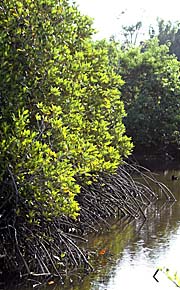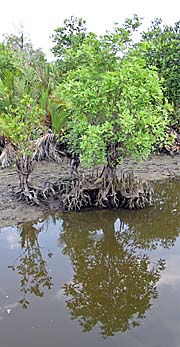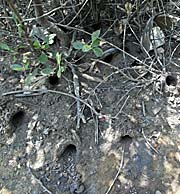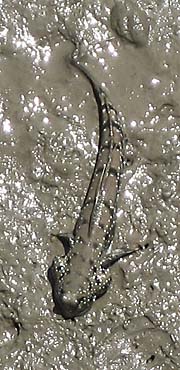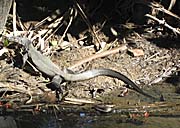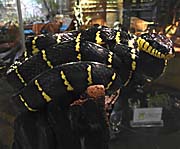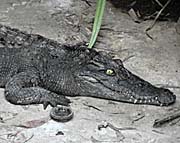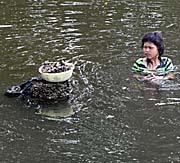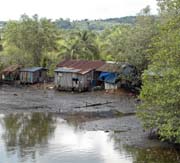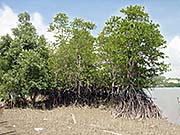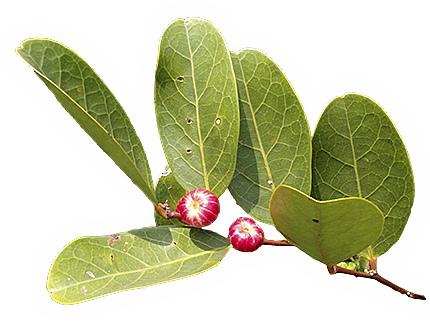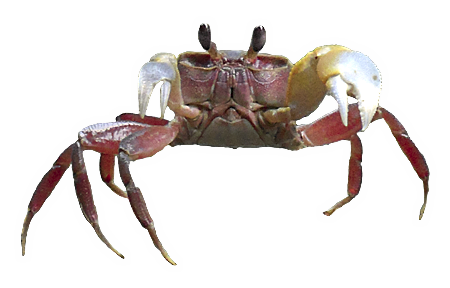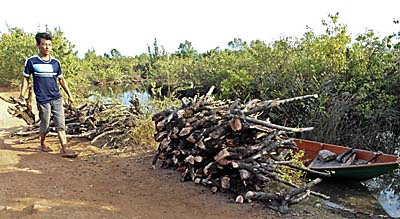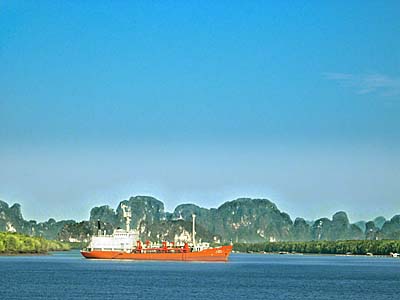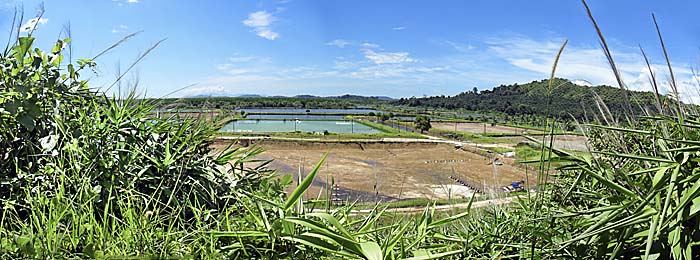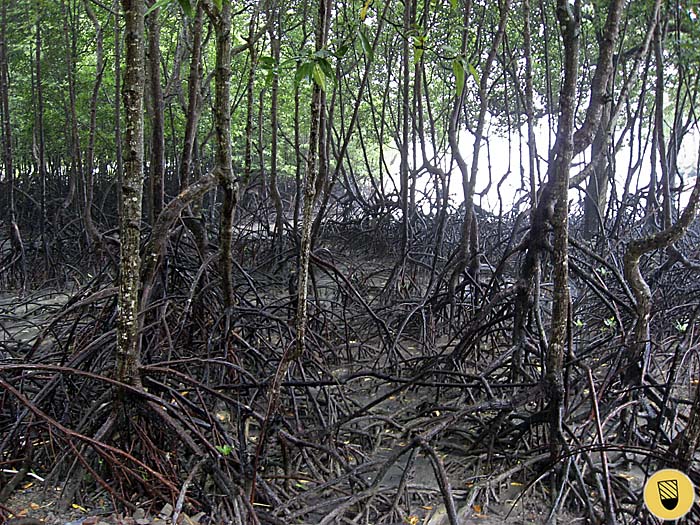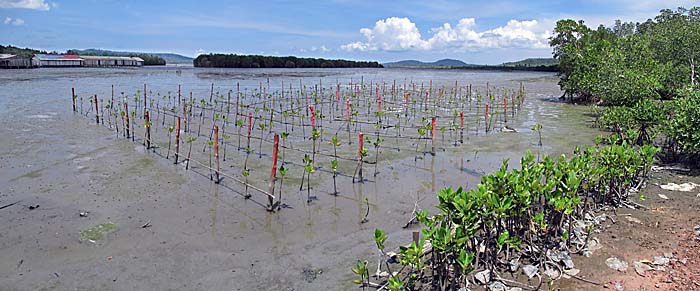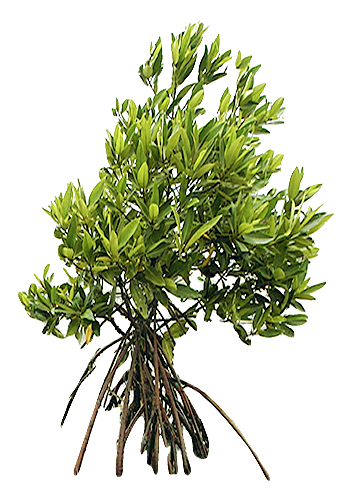Mangroves in Southeast Asia
A very few decades ago the verymost of Southeast Asia's coasts and river mouthes were overgrown with dense mangrove forests. Mangrove trees are adapted to grow in saltwater; other kinds of trees couldn't survive in the swampy, saline coastlines. In Southeast Asia evolved about fifty different kinds of mangroves - even the Nipa palm is a mangrove tree.
Mangrove Shore in Thailand

Mangroves at the shores of the Andaman Sea at Krabi, south Thailand. Image by Asienreisender, 2009
They provide a rich habitate for a lot of animals and are a fertile hatchery for fish. A thick belt of mangroves along a coast is also a protection for the land against erosion and floods; even tsunamis are (at least partially) blocked by mangrove forests. Additionally they have a filtering effect on sediments and nutrients in the water.
Generally, 'mangrove' is a term for tropical and subtropical trees and shrubs who grow in saline swamps. They include a wide variety of different plants. What they have in common is that it's crucial for their survival that the water temperature doesn't drop below 20 degree celsius. However, a given mangrove forest itself usually consists of a very limited number of mangrove species; often it's only two or three, and the appearence of such a forest is quite homogenous.
More specific, 'true mangroves' are trees of the Rhizophora family.
Mangrove Roots
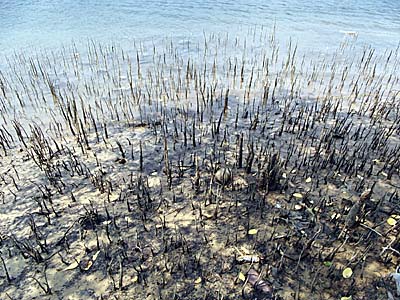
The coastal, saline silt does not provide the necessary oxygen for plants. Mangroves therefore evolved aerial roots for breathing. The air is piped further through the roots. Image by Asienreisender 2014, Cambodian south coast.
The widest variety of mangroves appears in the Malay Archipelago, namely Malaysia and Indonesia. However, Indonesia's huge mangrove forests are by 48% categorized as 'moderately damaged' and another 23% are 'badly damaged'. The process of destruction is certainly increasingly ongoing.
Mangroves as an ecosystem are an intersection of marine and terrestric life. While the upper levels of the mangroves are inhabited by insects, reptiles, mammals and birds, the roots in the saltwater are hosting a great deal of fish, crabs, clam, snales and a lot of other water animals and organisms.
Depending on the environment mangroves grow either pretty small or, under better circumstances, several meters, sometimes between five and over twenty meters.
Some mangrove species developed the ability to expel salt through their leaves.
Large Mangrove Forests along
South Thailand's Andaman's Sea Coastline

Ko Chang in the Andaman Sea is one of many islands with long and dense mangrove coasts.
Image by Asienreisender, 2012

Mangrove forests are covering much of the long shores along the Andaman Sea. Ranong Province in Thailand hosts part of the last large and consistent mangrove biotopes in Southeast Asia. Also reforestation takes place here. The mangrove coasts here expand for hundreds of kilometers further north of Ranong and Kawthaung along the Burmese coast.
Image by Asienreisender, 2012
Peam Krasaop Mangrove Forest
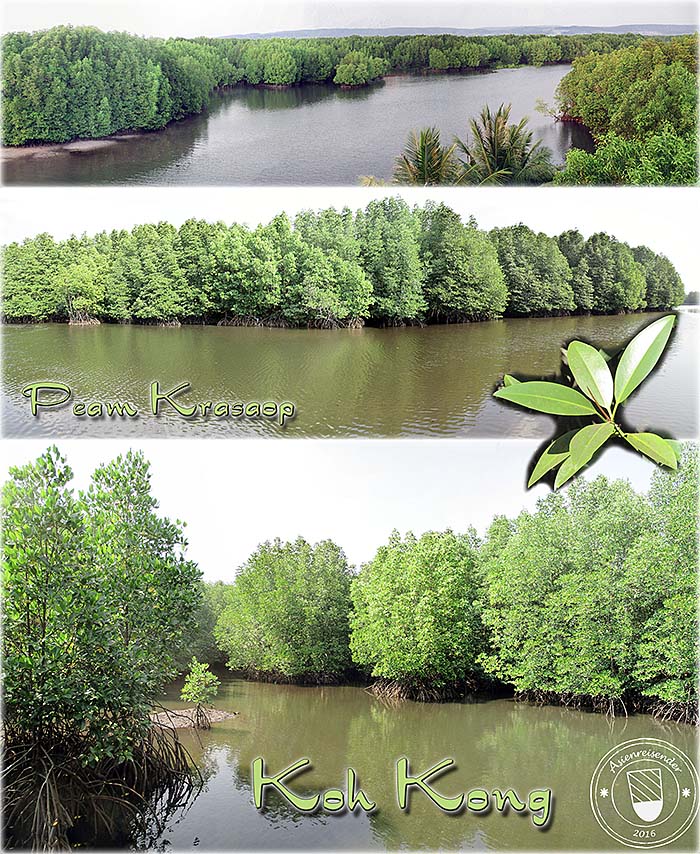
The mangrove forests at Koh Kong's shores along the Gulf of Thailand. They are still large, but in decrease due to rapid population growth. In the background of the upper image are the Cardamom Mountains to see. Images and photocomposition by Asienreisender, 2/2016

